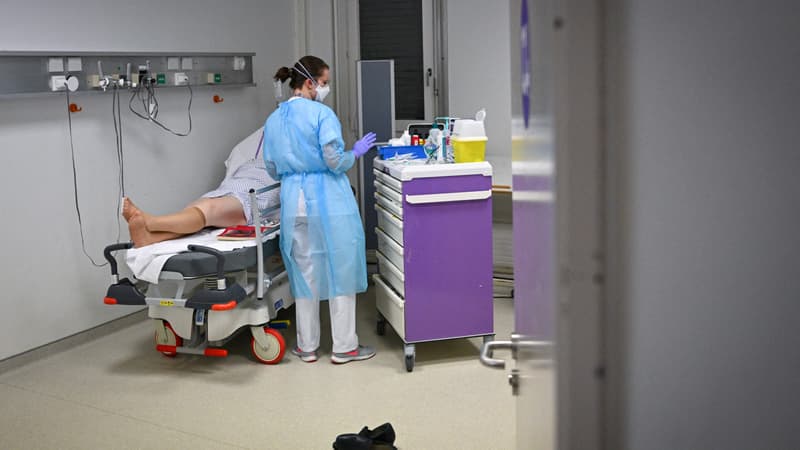Concrete solutions. In a report published on Tuesday, November 19, the Court of Auditors lists eleven recommendations to stop the congestion of emergency services victims of “dysfunctions in the health system”, underlining that the reforms initiated since 2018 must be “accelerated”.
Symbol of the hospital crisis, emergency services, which President Emmanuel Macron had promised to unclog before the end of 2024, remain affected by staff shortages and saturated with patients, who sometimes remain stuck for more than 24 hours on stretchers.
The 694 emergency structures registered 20.9 million visits in 2022, a figure that has not stopped increasing since 1996 (excluding Covid-19). The Court notes a “deterioration in the service provided” in recent years, including a “lengthening of the average duration” of journeys, a factor in excess mortality.
Tracks
Therefore, the Court of Auditors suggests coordinating the teams that intervene at the request of the “SAS” (access to care service, which associates Samu and the city’s doctors) and those that deal with the permanence of care. in the city in the evenings and weekends (PDSA).
The territory continues to be poorly covered by the PDSA, the magistrates observe, raising “the question of reestablishing the mandatory participation” of private doctors (abolished in 2003), “along with territorial balance measures” of medical centers.
Private unscheduled care centers, which are multiplying and “capturing scarce human resources,” should be subject to a “specific authorization regime,” they believe.
In hospitals, the report calls for “systematizing direct hospitalization channels” for older people, without going to the emergency room, “generalizing territorial emergency teams” (grouping emergency doctors into a population group) and working on “downstream bed management”. on a territorial scale, to quickly redirect patients requiring hospitalization.
Finally, they advocate consolidating and improving data related to emergencies, controlling activity and billing, and making public information in real time about open services and waiting times.
“Areas for improvement”
In the summer of 2022, the crisis became “big”, forcing the executive to authorize temporary closures, especially at night, which relieved caregivers but “undermined the principle of unconditional and permanent reception” that prevailed, he recalled, during a press conference, the President of the Court Pierre Moscovici.
Several phenomena combine: doctors are scarce in the city, especially at night and on weekends, which pushes patients who do not require emergency care to the hospital; the population ages and requires more attention; and the lack of “downstream” beds to hospitalize patients slows down “upstreams.”
“Many areas of improvement have been driven” by the reforms since 2018, but “emergencies remain the way out of all the dysfunctions of the health system,” he declared.
In particular, measures aimed at improving healthcare in cities “are going in the right direction”, but “are not keeping pace with the necessary adaptations”, the report estimates. Some, such as the delegation of tasks to paramedical caregivers, encounter “resistance to change” and complex procedures that “neutralize” them, the Wise Men further lament.
Source: BFM TV


